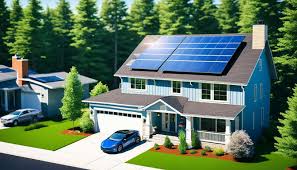The evolution of roofing technology has ushered in an era where homeowners no longer need to choose between attractive designs and environmental responsibility. Modern energy-efficient roofing solutions offer the perfect blend of aesthetic appeal and sustainable performance, contributing significantly to reduced energy consumption while enhancing property values.
The Science Behind Energy-Efficient Roofs
Energy-efficient roofing works primarily through two mechanisms: reflection and insulation. High-performance roofing materials reflect a greater percentage of solar radiation than traditional materials, while advanced insulation techniques minimize heat transfer between the outdoor and indoor environments. This dual approach helps maintain comfortable indoor temperatures year-round while reducing the burden on heating and cooling systems.
Popular Energy-Efficient Roofing Options
Cool Roofs
Cool roofs utilize light-colored or reflective materials that can reflect up to 65% more sunlight than traditional dark roofs. These materials come in various styles, from traditional shingles to modern tiles, ensuring that homeowners can maintain their desired architectural aesthetic while benefiting from improved energy efficiency.
Green Roofs
Combining natural beauty with exceptional insulation properties, green roofs feature living vegetation that provides natural cooling through evapotranspiration. These systems can reduce energy costs by 20-30% while creating attractive outdoor spaces and supporting local biodiversity.
Solar Tiles
Unlike traditional solar panels, solar tiles integrate seamlessly into the roof’s design, offering a sophisticated appearance while generating clean energy. Modern solar tiles mimic the look of conventional roofing materials while providing substantial energy savings.
Economic Benefits
Reduced Energy Costs
Energy-efficient roofing can lower cooling costs by 15-35% during summer months, with some homeowners reporting annual energy savings of up to $1,200. The initial investment typically pays for itself within 5-7 years through reduced utility bills.
Increased Property Value
Properties with energy-efficient roofing solutions often command higher resale values, with studies showing a 6-8% increase in property value compared to homes with traditional roofing.
Tax Incentives
Many regions offer tax credits, rebates, and other financial incentives for installing energy-efficient roofing systems, making the transition more affordable for homeowners.
Environmental Impact
The widespread adoption of energy-efficient roofing contributes significantly to environmental conservation:
- Reduced carbon emissions through lower energy consumption
- Decreased urban heat island effect in cities
- Improved air quality through reduced power plant emissions
- Enhanced stormwater management with green roof systems
Design Considerations
Modern energy-efficient roofing materials come in various styles and colors, allowing homeowners to maintain architectural integrity while improving efficiency:
- Traditional shingle designs with enhanced reflective properties
- Slate-look tiles made from recycled materials
- Mediterranean-style clay tiles with cooling technology
- Contemporary metal roofing with advanced coating systems
Installation and Maintenance
Professional installation is crucial for maximizing the benefits of energy-efficient roofing. Regular maintenance ensures optimal performance and longevity:
- Annual inspections for damage or wear
- Cleaning reflective surfaces to maintain efficiency
- Monitoring vegetation on green roofs
- Checking insulation integrity
Future Trends
The energy-efficient roofing industry continues to innovate, with emerging technologies promising even greater benefits:
- Smart roofing materials that adapt to weather conditions
- Advanced thermal storage solutions
- Integrated energy management systems
- Self-cleaning surfaces for maintained efficiency
Energy-efficient roofing represents a crucial advancement in sustainable building technology, offering a perfect balance of form and function. As climate concerns grow and energy costs rise, these solutions provide homeowners with an attractive way to reduce their environmental impact while enhancing their property’s value and appearance.

